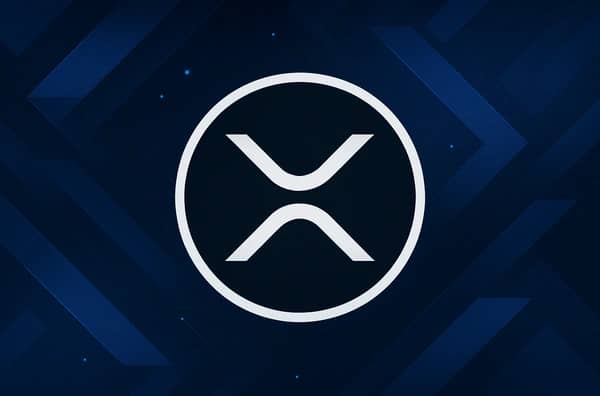订阅 wiki
Share wiki
Bookmark
mXRP
mXRP
mXRP 是一个 流动性 质押 代币和为 XRP 生态系统设计的结构化凭证,于2025年9月22日推出。它的设计目的是允许 XRP 持有者通过代币化衍生品赚取资产收益,该衍生品可用于 去中心化金融 (DeFi) 协议。该产品是代币化平台Midas和互操作性协议 Axelar 的核心开发者Interop Labs之间的合作成果。 [6] [7] [4] [5] [6]
概述
mXRP的开发是为了解决XRP生态系统中资本利用率低的问题。在推出时,据估计,由于缺乏本地、可扩展的收益生成机会,超过80%的XRP的1800亿美元市值处于休眠状态。[1] [6] 该代币是XRP Ledger (XRPL)的第一个流动性质押代币 (LST),旨在将XRP从主要用于支付的资产转变为DeFi中产生收益的工具。[2] [4]
mXRP作为XRPL的EVM兼容侧链上的ERC-20代币发行,代表用户在代币化证书结构中的份额。该结构跟踪由第三方资产管理公司管理的底层链上和链下收益策略的绩效。[7] [5] 通过代币化质押头寸,mXRP保持流动性和可组合性,这意味着它可以进行交易、借贷或用作其他DeFi应用中的抵押品,同时底层XRP继续赚取基本收益。该项目的创建者希望它成为XRPL上新兴DeFi生态系统的基础要素。[6]
Midas的联合创始人兼首席执行官Dennis Dinkelmeyer表示:“多年来,大部分XRP供应一直处于休眠状态;mXRP为用户提供了一种透明的机制来访问链上策略。凭借强大的社区需求和DeFi集成,我们相信mXRP可以在解锁XRP的新用例方面发挥关键作用。”[7] [4] [5]
历史
mXRP代币于2025年9月22日正式推出。该发布会在韩国首尔举行的XRPL Seoul 2025大会上现场宣布,超过3000名XRP持有者参加了此次活动。[7] [4] [5] 该项目由Midas、Axelar和Interop Labs联合发起,旨在为XRP社区带来可扩展、可持续和可组合的收益。[1]
技术
架构
mXRP在XRP账本的EVM兼容侧链上运行。原生XRP账本主要为高效支付而设计,缺乏复杂DeFi应用所需的高级智能合约功能。在RippleX的支持下开发的EVM侧链的引入,允许开发者部署用Solidity编写的应用程序,使mXRP等产品能够与更广泛的以太坊风格的DeFi生态系统集成。[2] mXRP代币本身符合ERC-20标准,使其与侧链上的各种DeFi协议和钱包兼容。[6]
铸造和收益生成
用户获取 mXRP 并赚取收益的过程涉及多个步骤,这些步骤由项目的基础设施促进:
- 桥接: 用户首先将其原生 XRP 从主 XRP 账本转移到 XRPL EVM 侧链。这种跨链转移由 Axelar 的互操作性协议处理。 [2]
- 存入: 然后,桥接的 XRP 作为 抵押品 通过经过审计的智能合约存入 Midas 的代币化证书结构中。 [7]
- 铸造: 作为存款的回报,用户收到等量的 mXRP 代币,这些代币代表他们对底层质押 XRP 的债权。 [2]
- 收益部署: 汇集的 XRP 抵押品 被部署到各种链上和链下收益生成策略中。这些策略的性能会增加 mXRP 代币的价值。 [7] [4]
互操作性
Axelar 为 mXRP 提供了核心互操作性层,这对于代币的可扩展性至关重要。它的网络充当连接原生 XRP 分类账到 XRPL EVM 侧链 的桥梁,该功能被描述为当时 XRPL 的第一个也是唯一的 DeFi 连接器。[7] [5] 这种基础设施允许 Axelar 桥接的 XRP 用于 gas 费用,从而促进跨链流动性聚合。[6] 该基础设施还旨在将 mXRP 连接到更广泛的 Axelar 网络,其中包括 80 多个其他区块链,从而有可能实现未来的跨链用例。[1]
Georgios Vlachos 是 Axelar 协议的联合创始人兼 Axelar 基金会 的董事,他评论了此次发布:“Axelar 是链上金融的门户。通过首次将 XRP 分类账连接到 DeFi 世界,我们正在实现引人注目的用例,包括代币化和交易集成。mXRP 代币展示了 Axelar 平台提供具有内置安全性和可配置性的实际应用程序的能力。” [7] [5]
策略管理
底层 XRP 抵押品 的收益生成策略由外部第三方资产管理公司(称为“风险管理者”)管理。 mXRP 的初始风险管理者是 Hyperithm,一家专门从事加密资产投资和风险管理的公司。 [6] [3]
这些策略旨在实现市场中性,这意味着它们旨在产生稳定的回报,而与 XRP 的价格方向变动无关。这些策略包括:
- 流动性提供: 向去中心化交易所 (DEX) 上的流动性池提供 XRP。
- 市场中性套利: 利用不同交易对或交易所之间的价格差异,同时对冲风险敞口。
- 抵押策略: 使用 XRP 作为 抵押品 进行活动,例如针对稳定资产的贷款。 [3] [4]
经济模型
收益生成
mXRP提供估计为6%至8% APY的基础收益,以XRP支付。 [6] 根据历史策略表现和扣除费用后,目标净回报估计高达10% APY,但可能会随时间变化。 [7] [4] [5] 预计用户如果积极将其mXRP代币部署到其他DeFi协议中,除了持有它们以获得基础收益外,还可以实现超过10%的年度总回报。 [6] [3]
“永久买家”机制
mXRP经济模型的一个显著特点是其收益分配方法,Axelar 联合创始人 Georgios Vlachos 将其描述为使 mXRP 成为 XRP 的“永久买家”。[6] 从投资策略中产生的收益用于从公开市场购买额外的 XRP。然后,这些新获得的 XRP 被分配给 mXRP 持有者,这一过程旨在对基础资产产生持续的、结构性的购买压力。[6] [6]
市场预测
Georgios Vlachos 在发布时预测,如果到 2026 年 6 月 mXRP 的管理资产 (AUM) 达到 100 亿美元,假设收益率为 7%,则永久买家机制每年可为 XRP 产生约 7 亿美元的购买压力。他还指出,mXRP 的推出预计将显著提高 across XRPL DeFi 生态系统中的收益率。例如,在 Strobe Finance 等平台上提供 XRP 流动性的 APY 预计将超过 5%,这比 mXRP 推出前低于 1% 的收益率有了显著提高。 [6]
生态系统和用例
DeFi 可组合性
作为一种流动性 ERC-20 代币,mXRP 旨在完全集成到 XRPL EVM DeFi 生态系统中。它的结构与传统的 XRP 收益产品形成对比,例如之前由 Bitrue 或 Flare 等平台提供的产品,这些产品通常充当静态储蓄账户,并且缺乏可组合性。 [6] 与锁定资产的产品不同,mXRP 可以自由转移、交易或在其他协议中使用。这种可组合性允许持有者将其用作贷款市场的抵押品,在 DEX 池中提供流动性,或参与其他收益耕作策略,从而创造多层潜在回报。 [6] [1] [4]
市场背景与影响
mXRP进入市场时,其他区块链上已经存在成熟的流动性质押代币,如以太坊上的stETH(提供3-4%的年化收益率)和Solana上的jitoSOL(提供5-7%的年化收益率)。mXRP的目标收益率更高,为6-8%,旨在成为一个有竞争力的替代方案,同时释放XRP市场大量未开发的流动性。[2]
mXRP的推出反映了XRP角色的战略转变,使其从主要跨境结算资产转变为DeFi原生实用代币。[6] 该项目旨在作为基础流动性来源,以引导XRPL EVM侧链上DeFi的增长,并可能通过透明、经过审计的生息工具吸引机构投资者。这一举措符合XRP机构采用的更广泛趋势,包括与哥伦比亚、巴西和新加坡等地区的银行合作,测试XRP在跨境支付和CBDC集成中的应用。[6] [2] 通过利用代币化和跨链互操作性,mXRP可以催化流动性和需求的反馈循环,将XRP定位为去中心化金融领域的核心资产。[6]
主要参与者
- Midas: mXRP 代币化证书的发行方。Midas 被描述为一个代币化平台,为开放网络构建机构级金融产品。它得到了包括 Framework Ventures、BlockTower Capital 和 GSR 在内的投资者的支持。在 mXRP 推出时,该平台的总锁定价值 (TVL) 超过 12 亿美元。 [7] [6] [4] [5]
- Axelar 和 Interop Labs: Axelar 被描述为“链上金融的门户”,为 mXRP 提供核心跨链基础设施和桥接技术。Interop Labs 是 Axelar 协议的核心开发者,也是此次发布的关键合作伙伴。 [7] [4] [5]
- Hyperithm: 初始第三方“风险管理者”,负责执行和管理底层 XRP 抵押品 的市场中性收益策略。 [3]
- RippleX: 虽然不是 mXRP 的直接创建者,但 Ripple 的开发者部门 RippleX 在开发支持 mXRP 等复杂 DeFi 产品的 XRPL EVM 侧链 基础技术方面发挥了重要作用。 [2]
风险与限制
已识别的风险
mXRP产品存在多种潜在风险,这些风险源于其对智能合约、跨链技术和积极市场策略的依赖。这些风险包括:
- 智能合约风险: mXRP或其交互的DeFi协议的智能合约中的漏洞或错误可能导致资金损失。
- 桥接安全风险: 跨链桥历来是常见的攻击目标,对在XRP账本和EVM侧链之间转移的资产构成风险。
- 收益波动: 目标年化收益率是一个估计值,不能保证,因为它取决于底层投资策略的表现,而这些策略可能会波动。
- 流动性风险: 市场中性策略依赖于充足的市场流动性。流动性的突然下降可能会对收益产生负面影响或“挤压”收益。
- 交易对手和运营风险: 产品的性能取决于其关键合作伙伴,包括第三方资产管理公司(如Hyperithm)的策略执行和Axelar的桥接基础设施。这引入了交易对手和运营风险。[6]
- 监管不确定性: 作为一种新型加密金融产品,mXRP可能面临未来各个司法管辖区的监管审查或变化。XRP本身在主要市场的监管状态也可能影响相关产品(如mXRP)的采用和合法性。[2] [3] [6]
地域限制
Midas对其代币(包括mXRP)采用以合规为中心的发行模式。该产品不向位于美国、英国或其他受制裁司法管辖区的人员或实体提供。 [6] [7] [5] [6]
发现错误了吗?
